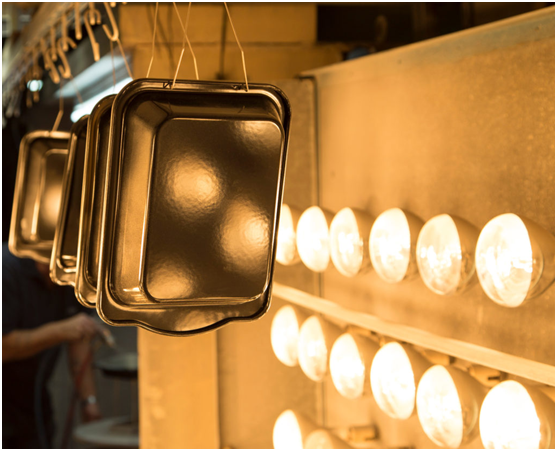What is self cleaning enamel
Professional answers from Nolifrit
Self-cleaning enamels or Easy to Clean (ETC) enamels refers to enamel products with self-cleaning ability. It is made of self-cleaning enamel powder coated on the surface of steel plates and sintered. It is mainly composed of catalyst, enamel frit and matte forming agent. This enamel powder is mainly used for the inner walls of cooking appliances such as ovens and microwave ovens. Due to the catalytic effect of the material itself, the oil and fat splashed during cooking can be oxidized and burned into water vapor and carbon dioxide and volatilized, thereby achieving self-cleaning purposes. Self-cleaning enamel was developed with the advent of ovens, ovens and microwave ovens on the world market. In the use of these cooking appliances, the problem of grease sticking to the inner wall needs to be solved urgently, so Europeans and Americans first developed self-cleaning coatings for cooking appliances. There are two types of self-cleaning coatings developed in the early days, namely, combustion self-cleaning coatings without catalyst and continuous self-cleaning coatings with catalyst. The so-called burning self-cleaning coating removes grease contamination by heating. The cooker is cleaned every 5 to 6 times, that is, it is heated to 500 to 600 ° C for 1 to 2 hours, and the pollutants are directly burned and removed. Continuous self-cleaning coating was first developed by A. B. Stiles in the United States in 1964 and entered the practical stage in 1970. It is a coating made by mixing a water-glass binder with a catalyst to make a mixed glaze slurry, which is then applied to the inner wall of the cooker and dried at a high temperature of 350 ° C. Because this coating contains a catalyst, the purification temperature is about 200 ° C lower than that of the combustion type, and it can be purified by cooking at 300 ~ 350 ° C.

Regardless of whether it is a combustion self-cleaning coating or a continuous self-cleaning coating, cooking and cleaning must be performed separately. The cooker is periodically heated for cleaning every few times. Therefore, the heat resistance of the cooker is It has strict requirements on thermal insulation, which not only increases the cost of the cooker, but also has certain problems in terms of safety and energy saving. In order to improve these deficiencies, the Central Research Institute of Japan's Matsushita Electric Industrial Corporation has developed an enamel-type coating called self-cleaning enamel since 1978.
Self-cleaning enamel consists of a highly active catalyst, a low melting point enamel glaze, and a matte former. It does not need to be specially cleaned on the cooking device, and can be purified by itself when cooking. From self-cleaning coating to self-cleaning enamel, it is a big leap in self-cleaning technology. Self-cleaning enamel is not only superior to self-cleaning coatings in purification performance, but also far superior to self-cleaning coatings in terms of adhesion and corrosion resistance with metal substrates. With the advent of multifunctional cookers, self-cleaning enamels as lining materials are required to have higher self-cleaning catalytic performance and high purification capacity. It must also be considered that the cost must be low. For this reason, in recent years, Nolifrit has developed a new type of high-performance self-cleaning enamel powder based on the original self-cleaning glaze. In addition to its excellent self-cleaning ability, it has been ball milled to a fine degree that can be used directly, which is convenient for users to spray directly. At the same time, it can provide a variety of colors according to customer needs to meet the different hobbies of users. And it has been recognized by many customers of ovens and baking pans.